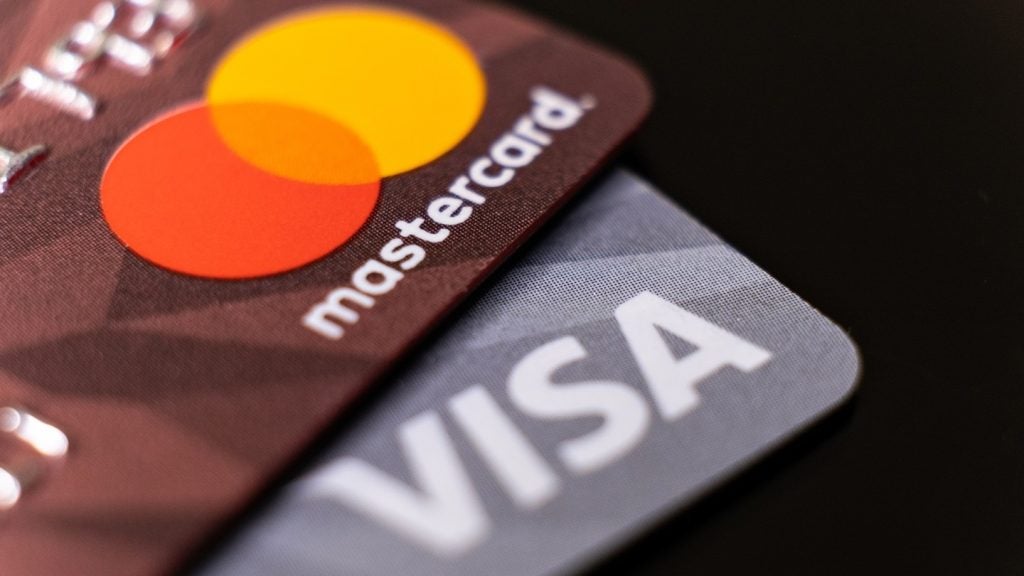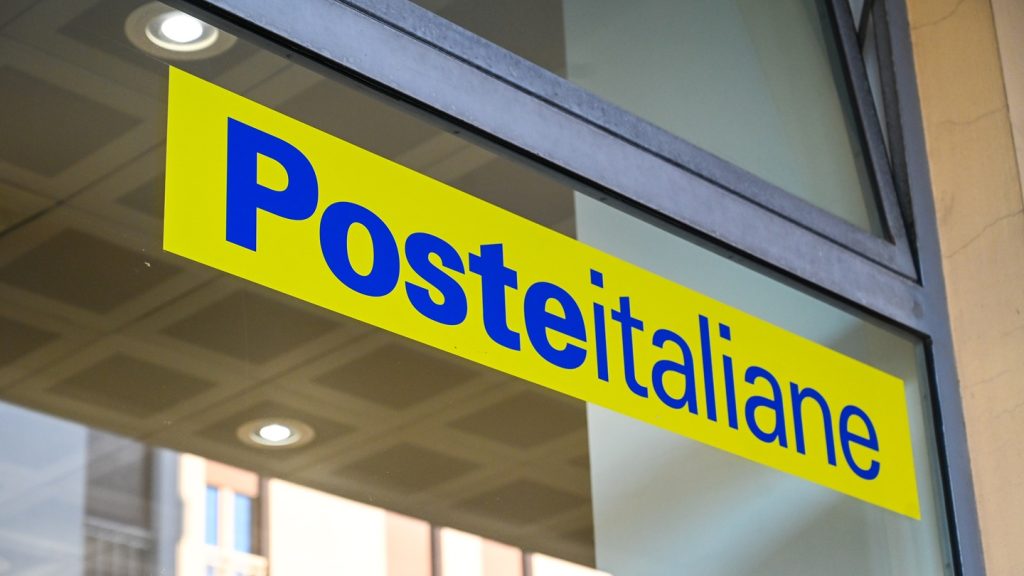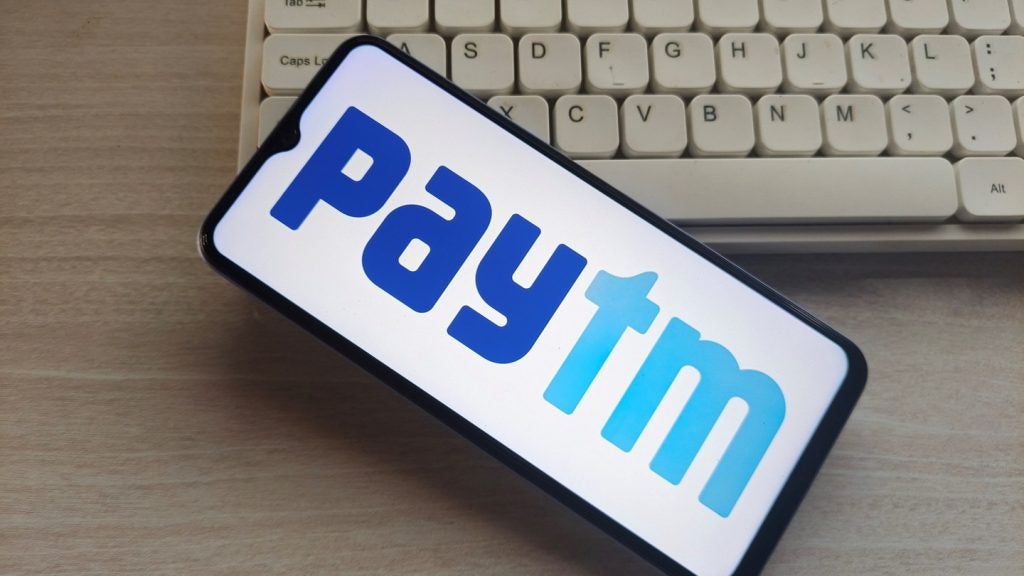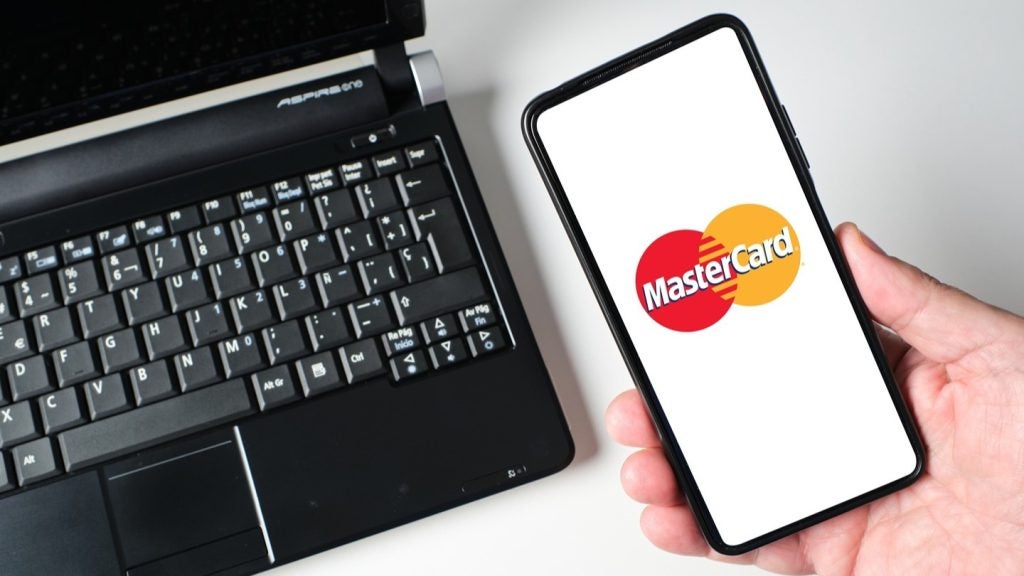Multi-promotional rewards and loyalty programs rewarding credit cardholders for having multiple products with their bank are key drivers in the US mass-affluent credit card market. Robin Arnfield reports.
According to Javelin Strategy & Research’s “Affluent Consumers Respond to Credit Card Rewards with More Than Card Loyalty” report, affluent consumers – defined as earning $100,000 or more a year – represent 22% of the US adult population.

Access deeper industry intelligence
Experience unmatched clarity with a single platform that combines unique data, AI, and human expertise.
“Among affluent US consumers, 93% own at least one credit card, and 59% report that credit cards are their most frequently used payment option,” the Javelin report says. “In contrast, 74% of all US consumers own a credit card and 37% say credit cards are their top-of-wallet choice…Major FIs such as Bank of America and Citibank have reported that credit cards now make up approximately 25% of their business profits, compared with 15% before the recession. Among the affluent who prefer to use credit cards as their payment choice, 64% say that rewards are the key driver for this preference compared with 28% of all consumers.”
Siddharth Agarwal, Lead Financial Analyst at Global Data, says a growing number of banks offer credit cards to mass-affluent customers. “Key reasons include the fact that, while mass-affluent consumers form a small proportion of the population, they tend to generate large revenues due to their significantly higher spending,” he says. “The risk of payment default by mass-affluent customers is significantly lower than mass-market customers.”
Multi-promotional rewards
“Rewards and loyalty are the driver in the US mass-affluent credit card market,” says Kevin Morrison, a Senior Analyst with Aite Group’s Retail Banking and Payments team. “We’re seeing multi-promotional marketing in the mass-affluent credit card market, where an issuer combines bonus reward points with promotional offers such as no annual fee and/or 0% interest for the first year. For example, Chase’s Sapphire Reserve credit card offer had multi-promotional marketing, and was so popular that Chase got overwhelmed.”
Launched in August 2016, the Sapphire Reserve card initially offered a sign-up bonus of 100,000 points provided cardholders spent $4,000 in the first three months.

US Tariffs are shifting - will you react or anticipate?
Don’t let policy changes catch you off guard. Stay proactive with real-time data and expert analysis.
By GlobalDataThe Sapphire Reserve, which has a $450 annual fee, was so popular that Chase reportedly ran out of actual cards. In January 2017, Chase halved the sign-up offer to 50,000 points in return for spending $4,000 in the first three months.
Morrison says a recent Aite Group survey of 1,700 US consumers discovered that issuers’ multi-promotional credit card rewards marketing is successful in terms of acquiring new cardholders. “We found that a high percentage of people who had applied for rewards credit cards in the last two years, made the rewards card they applied for top of their wallet,” he says. “This rewards card is the card they use the most often.”
New strategies
Morrison says the top US credit card issuers have changed their marketing strategies. “For example, Amex was always more focused on the mass-affluent,” he says. “But in the last few years, Amex has started to go down-market and now offers more mainstream card products, not just for the affluent. Also, in the last 36 months all the banks have loosened their credit-scoring compared to the period after the 2008 financial crisis, when you needed a specific credit score to get a credit card, and, without that score, you didn’t get the card.”
The introduction of instant decisioning technology to enable instant card approval and issuance means the acquisition timeline and usage cycle for a new credit card can shrink from 7-10 days to minutes, says Morrison.
You can apply online for a credit card on a bank’s website or a merchant site such as Amazon.com, and, if you meet their credit-scoring protocols, you’ll be approved instantly,” says Morrison. “Not only will you be mailed a plastic card, but you may immediately get a virtual card.
For example, applicants for the Amazon Prime Visa card issued by Chase get a virtual credit card for immediate use plus a plastic card. When you apply online and instantly get approved, plus you can start using the card immediately on an e-marketplace, it goes to the top of your wallet. Issuers are using data analytics and machine-learning to work out the best offers for customers, for example telling mass-affluent cardholders ‘if you spend $5,000 on the card in the first 90 days, we’ll give you a bonus 50,000 points.”
Tighter credit in 2018?
A cautionary note is sounded by Mercator Advisory Group’s “2018 Outlook: Credit” report. The US consultancy warns that 2018 will be a year for issuers to tighten up lending and build on existing customer relationships as credit card account delinquency begins to rise.
“Credit card account volumes and revolving debt in the US are back to peak levels,” warns Brian Riley, Director of Mercator’s Credit Advisory Service. “Concurrently, past due accounts are beginning to increase. In 2018, issuers should solidify their portfolios, grow organically, and prepare their portfolios for emerging payment opportunities.”
Riley writes that issuers will continue to address the high spend, high-value travel segment with rewards cards. “In 2017, top issuers battled for the market, armed with expensive product features and well-funded reward programmes offset by an annual fee between $450 and $550,” he says.
“There is some evidence of cardholders’ sticker shock at time of renewal of the annual fee, but the potential spend for this group is likely to keep the full-featured credit card offering alive, albeit with revised features. It is likely that issuers will hone their strategy on this group in 2018, if attrition becomes an operational concern.”
American Bankers Association
US credit card use continued to expand in Q2 2017, according to the American Bankers Association’s (ABA) October 2017 Credit Card Market Monitor, comprising data from April to June 2017.
“Monthly purchase volumes rebounded after a seasonal decline in the first quarter of 2017, rising by 9% across risk tiers,” the ABA said. “On an annual basis, purchase volumes rose 4.9% for prime accounts and 5.2% for super-prime accounts, but fell 1% for sub-prime accounts.”
The October 2017 Monitor found that the number of new accounts (those opened in the previous 24 months) increased, but at its slowest pace since 2013 – 0.2% quarter-over-quarter – reflecting subdued growth in new prime and sub-prime accounts.
The report says the share of “revolvers” (those carrying monthly balances on their cards) declined 1 percentage point to 43%, its lowest level in a year. The share of “transactors” (those paying their monthly balance in full each month) rose 0.6 percentage point to 29.4% of all accounts, while 27.5% of accounts were dormant.
Product cross-marketing
In the mass-affluent credit card market, the majority of cardholders are transactors, rather than revolvers.
“The banks are aware of this dynamic,” says Morrison. “They realise their promotional offers such as 0% interest for the first year encourage short-term usage, with customers switching from card to card in search of offers. What the banks want is to reward mass-affluent credit cardholders for holding additional products like chequeing accounts, e.g. by offering free cashback credit cards in return for a minimum balance of $1,000 in a current account. Chase’s promotion for Sapphire Reserve offered 100,000 rewards points if cardholders took out a mortgage on a new home purchase. Chase makes a lot more revenue from mortgage interest over 25 years by giving away a short-term reward than charging interest on a credit card.”
US Bank’s Altitude Reserve Visa Infinite card rewards cardholders with points when they make purchases using their card on a smartphone mobile wallet. “This incentive to use mobile wallets is a unique offer in the credit card market,” says Morrison. “What U.S. Bank is doing is to ensure its card is top of wallet in a cardholder’s Apple Pay or Samsung Pay mobile wallet, so they use their U.S. Bank card whenever they pay with their phone.”
Competition
“The mass-affluent and affluent credit card markets are extremely competitive,” says Tony DeSanctis, Senior Director at US consultancy Cornerstone Advisors. “The value proposition offered by most products is having a significant impact on margins and has led some issuers to pull back on the offerings – e.g. the halving of the Chase Sapphire Reserve sign-up bonus – or make the spending requirements more significant.”
One example was Citi requiring new Citi Prestige cardholders to spend $7,500 on the card in the first three months to earn 75,000 points, an offer which is no longer available.
“However, the market for super-premium cards (typically those with annual fees of $300+) continues to grow, and new offerings are still to come,” says DeSanctis. “Examples include the recently relaunched Hilton Honors Amex Surpass card and the upcoming Starwood/Amex super-premium co-brand card.
Despite these annual fees, the benefits costs and rewards expense associated with these cards is putting pressure on issuers’ margins, says DeSanctis. “In addition, the people who are spending $450 on an annual fee are also much less likely to be the people who revolve their balances,” he says. “The tendency is to forget that the majority of profit from credit card programmes still comes from interest income.”
Intense competition to acquire new accounts using attractive rewards have depressed returns for some issuers. According to First Annapolis’ “Q3 2017 US Credit Card Issuer Snapshot,” Citi, Capital One, Discover and Synchrony all saw their after-tax return on assets (ROA) in Q3 2017 decline respective to the year-earlier quarter. The US consultancy didn’t have access to ROA figures for Bank of America, Wells Fargo or U.S. Bank.
Amex’s CFO stated in a Q2 2017 earnings call that “rewards expense increased 9% year over year…it’s going to continue to be a very competitive environment.”
“Executives from Capital One, Discover, Synchrony, and Bank of America all made similar comments about the rising cost of rewards in the first two quarters of 2017,” First Annapolis stated in its October-November 2017 Navigator report.
“The top 10 banks control 88% of the credit card loans in the US today, and these numbers are growing,” says DeSanctis. “The top 20 have close to 93%. This concentration gives very robust scale advantages to the top 10 banks, not unlike Walmart and Amazon in retail, and most smaller FIs don’t know how to compete. The partnerships, co-brand relationships and product value propositions give these large issuers the ability to further differentiate, for example, with airline, retail, and 1.5% cashback cards.”
DeSanctis adds that mobile-first capability is critical for consumer credit card customer service. “While a lot of attention is around Apple Pay, Samsung Pay, and other Pays, the real area of differentiation is the overall mobile experience,” he says. “If I can’t do everything on my mobile device that I can do on the phone or even online, then I’m moving my business. Things like card controls, rewards redemptions, and even basic maintenance need to be seamless and available via mobile.”
Bank of America
“As part of our responsible growth strategy, we’re focused on building stronger relationships with (credit card) clients and earning more of their business,” “a BofA spokesperson tells CI.
BofA’s responsible growth strategy involves incrementally rewarding its existing customers for the deposit relationship and other relationships they have with the bank. It says its focus is on growing card relationships steadily and responsibly with its existing customers, while seeking to remain competitive with other issuers.
In September 2017, Bank of America (BofA) introduced the Premium Rewards credit card. The card ties into BofA’s Preferred Rewards programme which looks holistically at a client’s relationship with the bank and provides more benefits and rewards across their entire relationship.
There are three levels in Preferred Rewards based on the client’s overall relationship, and benefits increase as the relationship grows: Gold, Platinum, and Platinum Honors. A customer’s tier is based on their qualifying combined balances in their BofA banking and/or Merrill Edge and Merrill Lynch investing and trading accounts.
“The Premium Rewards card provides two points for each dollar spent on travel and dining purchases and 1.5 points for each dollar spent on all other purchases,” the BofA spokesperson says. “For clients enrolled in the bank’s Preferred Rewards programme, the rewards points increase by 25% to 75% on each purchase – earning up to 3.5 points per dollar on travel and dining purchases and 2.62 points per dollar on everything else. The added value clients receive when they are enrolled in Preferred Rewards is an important differentiator and ties in with our focus on rewarding customers for their relationship with us.”
Citi
Citi Cards has taken major steps to develop a digital customer service model for its credit card customers, a Citi spokesperson tells CI.
“Citi has transformed its customer-centric culture and established an operating model that delivers for customers with greater agility and speed to market,” she says. “By leveraging research, first-hand conversations, and co-creation with customers, and by adopting a largely agile model (versus the traditional waterfall model utilised previously),
Citi Cards launched 86 new digital features in the US in 2016. This represented an 85% increase in the number of new digital features versus 2015. New features included the ability to track a replacement card and file a dispute in app — both firsts for a major US credit card issuer.”
In 2018, Citi plans to launch over 800 digital features by year end, including the ability to scan a card using a mobile device’s camera when activating it in the Citi Mobile App, view a customised summary of spending within a personalised date range through the App, and add an authorised user on a credit card, the spokesperson says.
“As Citi has simplified and improved the customer experience across digital and mobile channels, usage and engagement is skyrocketing,” she says. “As of Q3 2017, Citi realised 22% growth in active mobile banking customers (includes credit card customers) versus 2016 — the highest growth rate in mobile users among top banks in the US. In addition, mobile app logins have surpassed browser logins for the first time, and Citi’s mobile app has maintained a 4.5 star or above rating in the App Store for over a year.”
US Bank
“The Altitude Reserve Infinite Card is currently available exclusively for customers of U.S. Bank,” Bob Daly, U.S. Bank Senior Vice President of Retail Payment Solutions, says. “We’ve found that the product is very appealing to those that live a life on the go and appreciate the ability to earn points quickly and secure tremendous value for their points at redemption.”
“Whether you’re earning points or burning them, Altitude Reserve has embraced digital innovations,” the U.S. Bank spokesperson says. “On the earn side, digital wallet purchases (Apple Pay, Samsung Pay, Android Pay or Microsoft Wallet) earn three points per dollar spent, and, on the burn side, our Real-Time Mobile Redemption (RTMR) solution enables cardholders to instantly redeem points via SMS text message for almost any recent purchase. For customers on the go, these digital capabilities have proven to be relevant and very popular.”
For digital wallet purchases, Altitude Reserve is experiencing transaction rates that are many multiples of the rates occurring on other US Bank-issued travel reward cards, the spokesperson adds.







